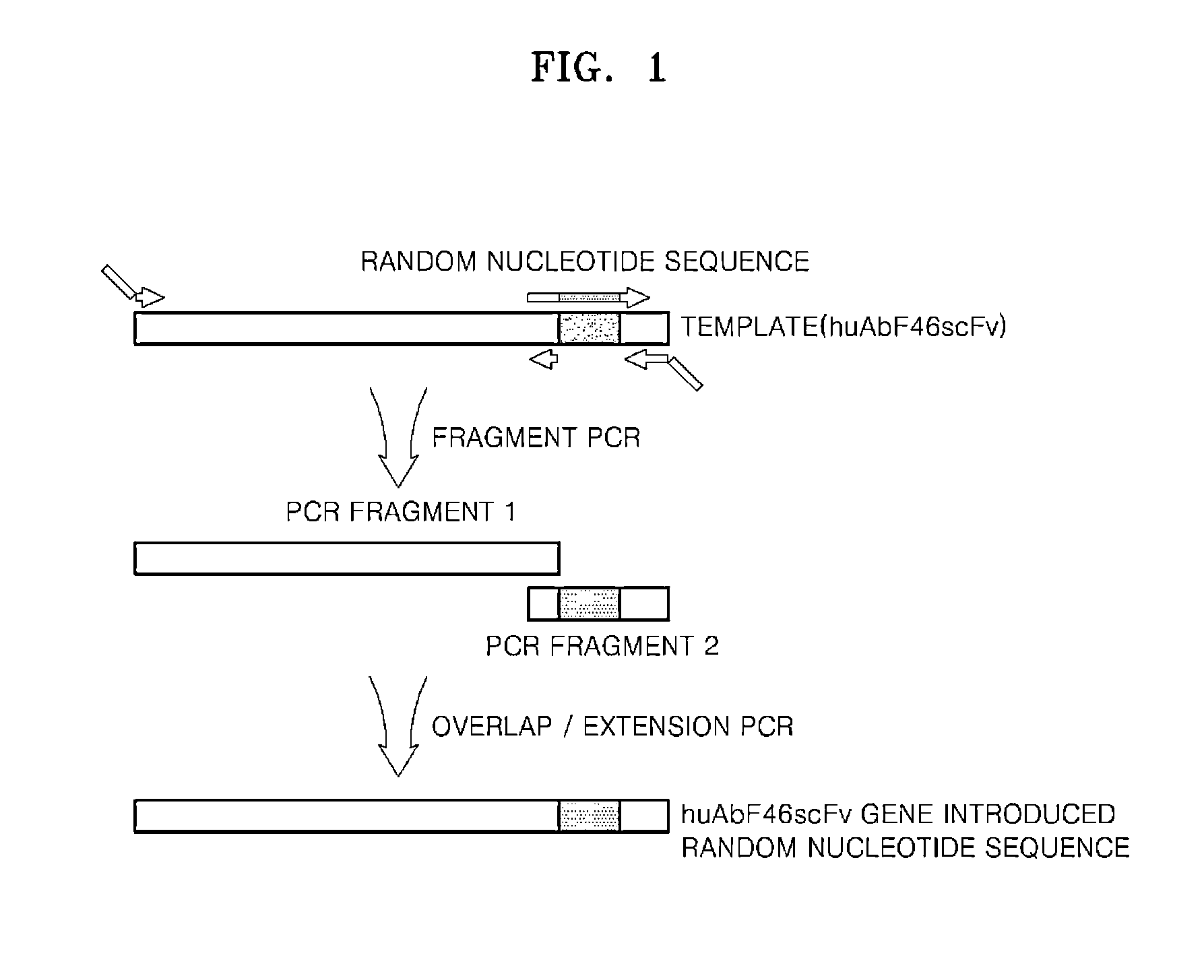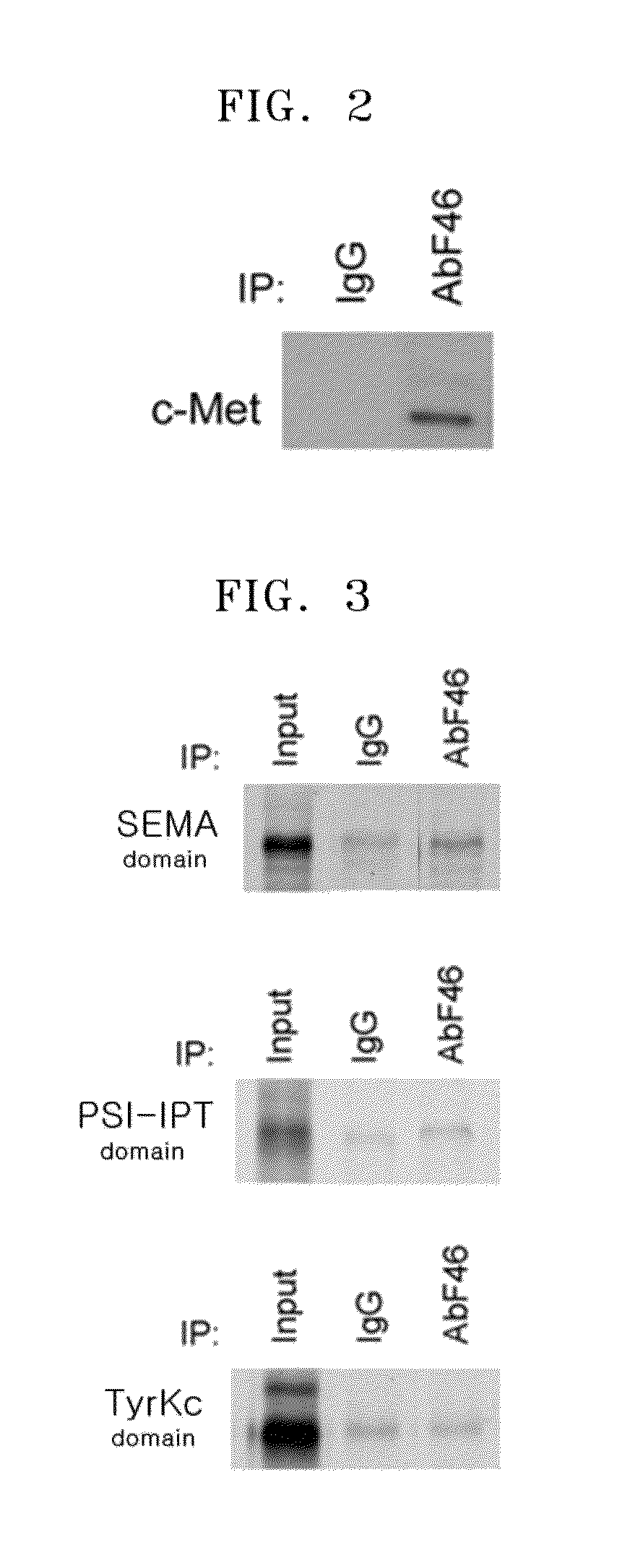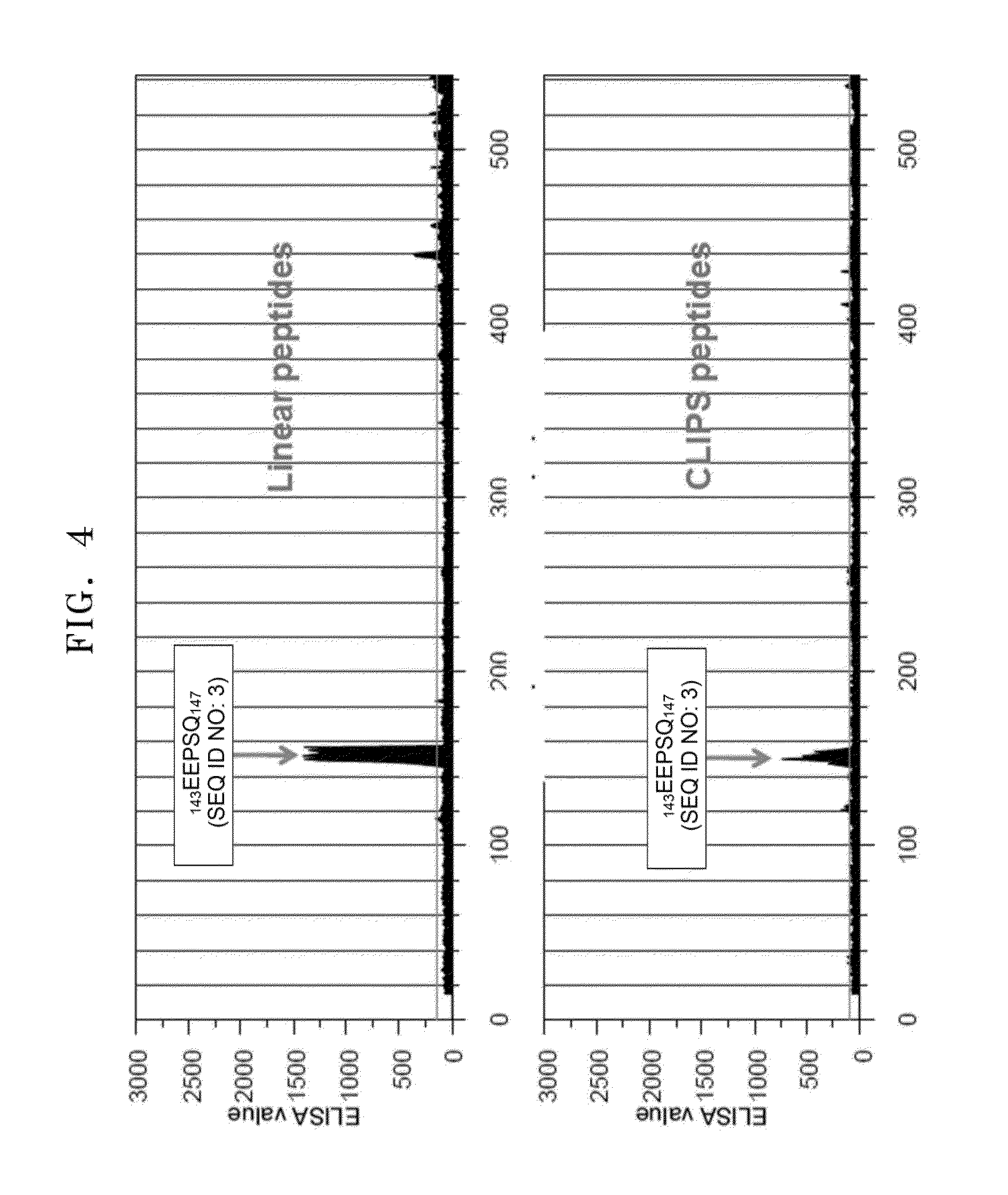Antibody specifically binding to epitope in SEMA domain of c-Met
a technology of c-met and epitope, which is applied in the field of antibody or antigen binding fragment, can solve the problems of low anti-cancer therapeutic effect and ineffective anti-cancer drugs
- Summary
- Abstract
- Description
- Claims
- Application Information
AI Technical Summary
Benefits of technology
Problems solved by technology
Method used
Image
Examples
example 1
Production of Mouse Antibody AbF46 Against c-Met
[0068](1) Immunization of Mice
[0069]To obtain immunized mice necessary for developing hybridoma cell lines, 100 μg of human c-Met / Fc fusion protein (R&D Systems) and a complete Freund's adjuvant in the same amount were mixed, and the mixture was administered via an intraperitoneal injection to each of five 4 to 6-week-old BALB / c mice (Japan SLC, Inc.). After two weeks, the antigen (half the previously injected amount) was mixed with an incomplete Freund's adjuvant using the same method as described above, and the mixture was administered to each mouse via an intraperitoneal injection. After one week, final boosting was performed, and blood was collected from the tail of each mouse after three days to obtain serum. Then, serum was diluted at 1 / 1000 with PBS, and an ELISA was performed to analyze whether the titer of the antibody recognizing c-Met increased. Afterwards, mice in which a sufficient amount of the antibody was obtained were ...
example 2
Preparation of Chimeric Antibody chAbF46 Against c-Met
[0078]In general, mouse antibodies are likely to provoke an immune rejection response when administered to humans for the purpose of treatment. To address this problem, from the mouse antibody AbF46 prepared according to Example 1, a chimeric antibody chAbF46, in which a constant region rather than a variable region involved in antigen binding is substituted with a sequence of a human antibody IgG1, was prepared.
[0079]A gene having a base sequence corresponding to a heavy chain of ‘EcoRI-signal sequence-VH-NheI-CH-TGA-XhoI’ (SEQ ID NO: 12) was synthesized and a gene having a base sequence corresponding to a light chain of ‘EcoRI-signal sequence-VL-BsiWI-CL-TGA-XhoI’ (SEQ ID NO: 13) was synthesized. Afterwards, a fragment of DNA having the base sequence corresponding to a heavy chain (SEQ ID NO: 12) was cloned into pOptiVEC™-TOPO TA Cloning Kit included in OptiCHO™ Antibody Express Kit (Cat no. 12762-019) manufactured by Invitroge...
example 3
Preparation of Humanized Antibody huAbF46 from Chimeric Antibody chAbF46
(1) Heavy Chain Humanization
[0082]To design H1-heavy chain and H3-heavy chain, first, a human germline gene that is most homologous to a VH gene of mouse antibody AbF46 was analyzed through NCBI Ig Blast. As a result, VH3-71 was confirmed to have 83% homology at an amino acid level, CDR-H1, CDR-H2, and CDR-H3 of mouse antibody AbF46 were defined by Kabat numbering, and the CDRs of mouse antibody AbF46 were introduced into a framework of the VH3-71 gene. In this regard, 30th, 48th, 73rd and 78th amino acids were back-mutated to the original amino acid sequences of mouse antibody AbF46 (i.e., (S→T), (V→L), (D→N), and (T→L), respectively). Afterwards, 83rd and 84th amino acids were further mutated (i.e., (R→K) and (A→T), respectively), thereby completing construction of H1-heavy chain (SEQ ID NO: 14) and H3-heavy chain (SEQ ID NO: 15).
[0083]To design a H4-heavy chain, a sequence of a human antibody framework was se...
PUM
| Property | Measurement | Unit |
|---|---|---|
| flow rate | aaaaa | aaaaa |
| length | aaaaa | aaaaa |
| pH | aaaaa | aaaaa |
Abstract
Description
Claims
Application Information
 Login to View More
Login to View More - R&D
- Intellectual Property
- Life Sciences
- Materials
- Tech Scout
- Unparalleled Data Quality
- Higher Quality Content
- 60% Fewer Hallucinations
Browse by: Latest US Patents, China's latest patents, Technical Efficacy Thesaurus, Application Domain, Technology Topic, Popular Technical Reports.
© 2025 PatSnap. All rights reserved.Legal|Privacy policy|Modern Slavery Act Transparency Statement|Sitemap|About US| Contact US: help@patsnap.com



